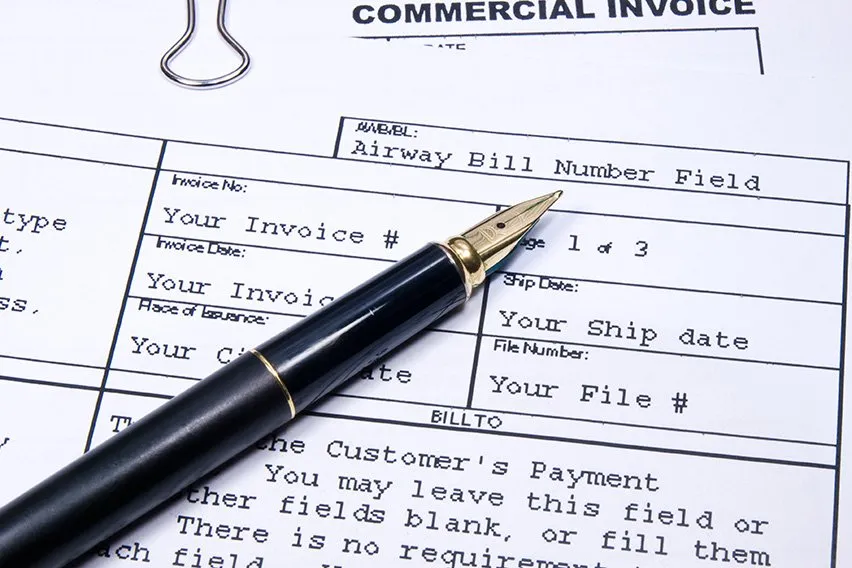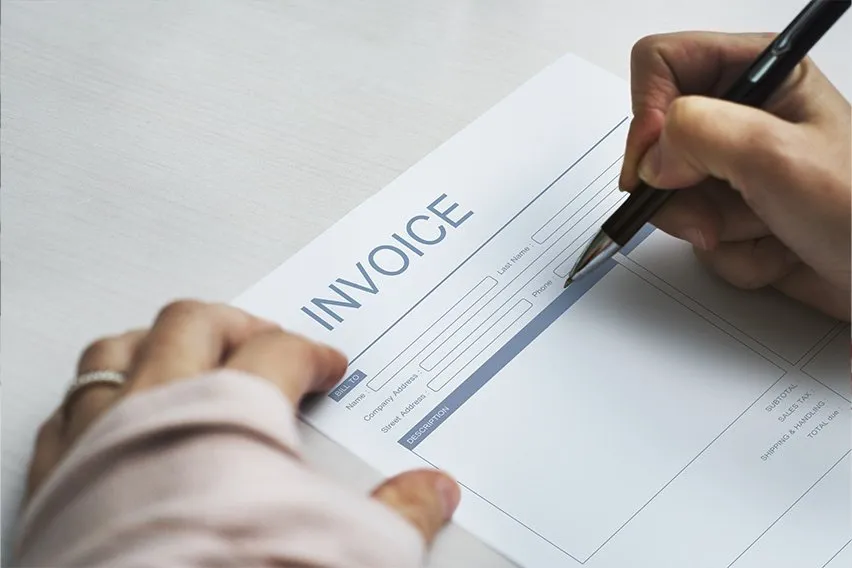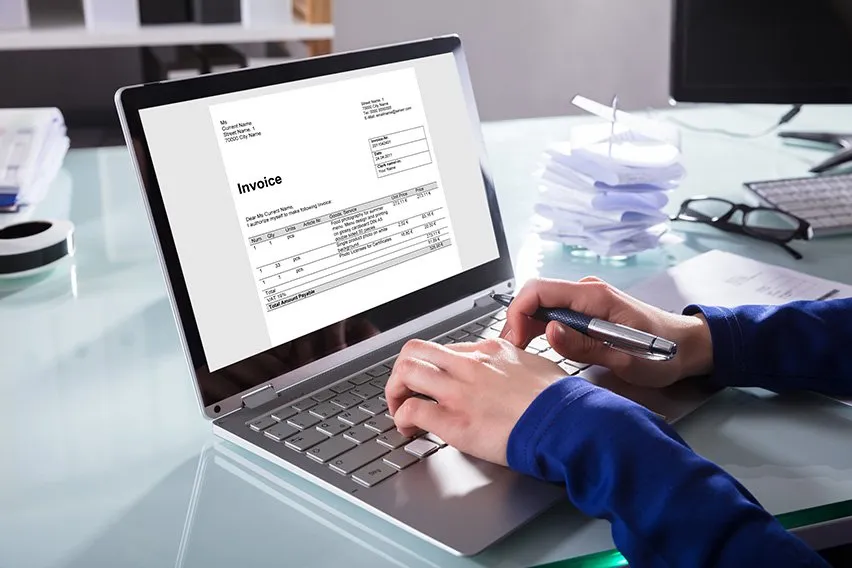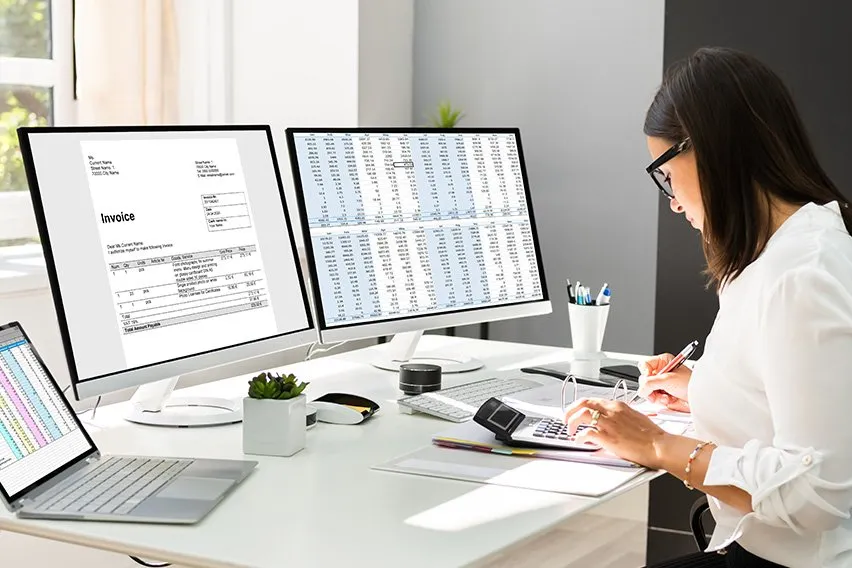How to Make a Commercial Invoice: Guide for Businesses with Templates

Small businesses that ship products internationally need to make commercial invoices for customs purposes. Businesses can create a commercial invoice by issuing a detailed document describing what you’re shipping and the value of the items shipped. Commercial invoices also serve as a bill by providing all the information required for your customers to pay you for the sale.
Here’s what you need to cover to learn how to make a commercial invoice:
How to Make a Commercial Invoice: Step-By-Step Guide
What Is a Commercial Invoice for Shipping?
What’s the Purpose of Commercial Invoices?
Do I Need a Commercial Invoice to Ship Documents?
How to Make a Commercial Invoice: Step-By-Step Guide
To make a commercial invoice to send to international customers, small businesses should follow these steps:

1. Download a Commercial Invoice Template
The easiest way to build a commercial invoice is to download a customizable template from a reputable site. You can use this commercial invoice form from the U.S. Department of Commerce, or this example from FedEx.
2. Fill in Seller Details
Fill in your business’s details, including the name of your business, its address, phone number and email address.
3. Fill in Customer Details
Include the name and address of the person or company purchasing your products. You’ll also want to include the shipping address, if it differs from the billing address.
4. Assign an Invoice Number
As with any type of invoice, you’ll want to include a unique invoice number on the commercial invoice. The easiest method of assigning invoice numbers is to do so sequentially: your first invoice would be Invoice #001, then Invoice #002, and so on. However, as the number of invoices increases, it becomes difficult to keep track of these numbers. Using Excel can help streamline this process by allowing you to auto generate invoice numbers in Excel. This helps reduce errors and makes it easier to keep track of your invoices.
5. Include a Customer Reference Number
In addition to the invoice number, you might want to include a customer reference number on your commercial invoices. Your customers can refer to this number if they need to contact your company with questions, concerns or to return any items they purchase from you.
6. Include the Terms of Sale
Detail your terms of sale. This refers to any information regarding the obligations, risks and costs both the seller and buyer take on as part of the sale of goods.
7. Detail the Terms of Payment
Detail your terms of payment. This will include important information regarding the terms and conditions you and the customer have agreed to for the sale. Typically, you’ll already have these details worked out as part of the purchase order for the sale or as part of the pro forma invoice.
8. Identify the Currency
Include on your commercial invoice the currency you and the buyer have agreed upon for payment for the sale. Often, the currency of settlement will be the currency of the seller’s country, so if you’re selling goods from your business in the United States, your currency of settlement will be US dollars.
9. Include Shipment Method
Indicate how your products will be shipped to the buyer, for example, by air, by ocean or by surface shipping.
10. Include the Quantity
Detail the total quantity of each product to be purchased and shipped.
11. Describe the Items
Provide a complete description of all items to be shipped. This includes the container type they’re packaged in (i.e. a box, envelope, etc.), the gross weight of each container, the quantity of each product and the unit of measurement.
12. Provide the Unit of Measure
Provide the total net weight and total gross weight of each item to be shipped, expressed in kilograms. Include the unit price of the merchandise, per unit of measure.
13. List the Price and Value
Include the total price for the shipment and list the total commercial value, which is the total value of all merchandise covered on the invoice.
14. Record Package Marks
Record any box markings or numbers (for example, if you’re shipping multiple boxes, you may label them box 1 of 3, box 2 of 3, box 3 of 3).
15. Detail Miscellaneous Charges
Record any miscellaneous charges the customer is expected to pay, such as insurance, export transportation, etc.

What Is a Commercial Invoice for Shipping?
A commercial invoice is a customs document used for foreign shipping. Commercial invoices serve as a legal agreement between the seller and the buyer and provide a detailed description of the goods sold and the amount due to the business.
This article outlines all the different kinds of invoices small businesses may need to send to their customers.
What’s the Purpose of Commercial Invoices?
A commercial invoice can be used in the following situations related to the process of shipping merchandise internationally:
- The buyer and seller use commercial invoices to outline all items being bought and sold.
- The buyer uses the commercial invoice to send funds for payment through its bank and on to the seller.
- If the goods shipped are insured and the buyer makes an insurance claim against the goods, the commercial invoice serves as an important support document in the claim.
- The importer or the acting customs official in the country of purchase requires a commercial invoice before clearing the goods through customs.
- Governments use commercial invoices to assess the true value of goods for customs and duties.
Do I Need a Commercial Invoice to Ship Documents?
Commercial invoices are only needed to ship goods that are considered to have a commercial value. As a general rule, commodities that are written or typed and aren’t considered to have commercial value are classified as documents. Commodities classified as documents do not require a commercial invoice to be shipped internationally. Only products that are determined to have a commercial value for customs purposes require a commercial invoice.
Looking for an effortless way to streamline your billing process? Try our Free Invoice Generator. It’s perfect for freelancers and small businesses, ensuring accuracy and saving time. Elevate your invoicing today with just a click.
More Useful Resources
- How to Make an Invoice
- How to Make a Service Invoice
- How to Make an Interim Invoice
- How to Make an Invoice Without a Company
RELATED ARTICLES

 How to Fill out an Invoice | Professional Invoicing Checklist
How to Fill out an Invoice | Professional Invoicing Checklist Invoice Wording: How to Word an Invoice For Your Business
Invoice Wording: How to Word an Invoice For Your Business What Does an Invoice Look Like: Everything You Need to Know
What Does an Invoice Look Like: Everything You Need to Know How to Write an Invoice For Services Rendered
How to Write an Invoice For Services Rendered How to Send an Invoice: An Overview
How to Send an Invoice: An Overview How to Create an Invoice in Excel (Template Included)
How to Create an Invoice in Excel (Template Included)